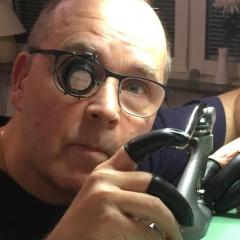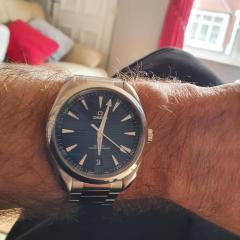Master Craft Mainspring Winder - Presentation and Review
-
Recently Browsing
- No registered users viewing this page.
-
Topics
-
Posts
-
You might like to see the contraption that I made for indexing on my Chinese lathe. This is a 4 inch rotary table with dividing plates that I attached to my lathe mandrel using a drawbar. It is completely manually operated. No electronics or computer needed. I have used it to make a 60 tooth clock wheel. I use a Sherline headstock on a vertical slide to drive the gear cutter. The wheel blank is mounted on an aluminium "superglue arbor." This is the modern equivalent of a shellac chuck, and allows the wheel to be centre bored, trued and the teeth cut in a single setup, ensuring that concentricity is maintained. The finished wheel after crossing. I have not tried to make small watch parts on this lathe. The runout on the mandrel bearings may be too high for that. I won't know unless I try.
-
By coreymsnow · Posted
Y'all are very helpful, I can't thank you enough for the insights. -
By FabioBastardo · Posted
Will do. Funny it doesn’t have a makers name. -
By Neverenoughwatches · Posted
Andygsi said he was done after last week and think old hippy has gone the same way😞. I'll miss both of them, especially the old fella. -
Hello from the great state of Tennessee. I live just a couple of miles from the geographical center of Tennessee so when I say that I live in middle Tennessee, it's the truth. Over the past couple of years I have really grown to love Hamilton pocket watches. Specifically the RR lever set ones. I have about 20 Hamiltons & most of them are 21 jewel RR watches. One of these days I'm gonna dive in & see if I can take one apart, clean & reassemble it. The 940's I have are too beautiful for me to risk destroying so I plan on getting a running cheap movement to experiment on. I am looking forward to reading & learning about the process of watch repair. I'm happy to be here!
-





.thumb.jpg.cb17a66989f1e796fd4217db2e9ca9df.jpg)


Recommended Posts
Join the conversation
You can post now and register later. If you have an account, sign in now to post with your account.
Note: Your post will require moderator approval before it will be visible.